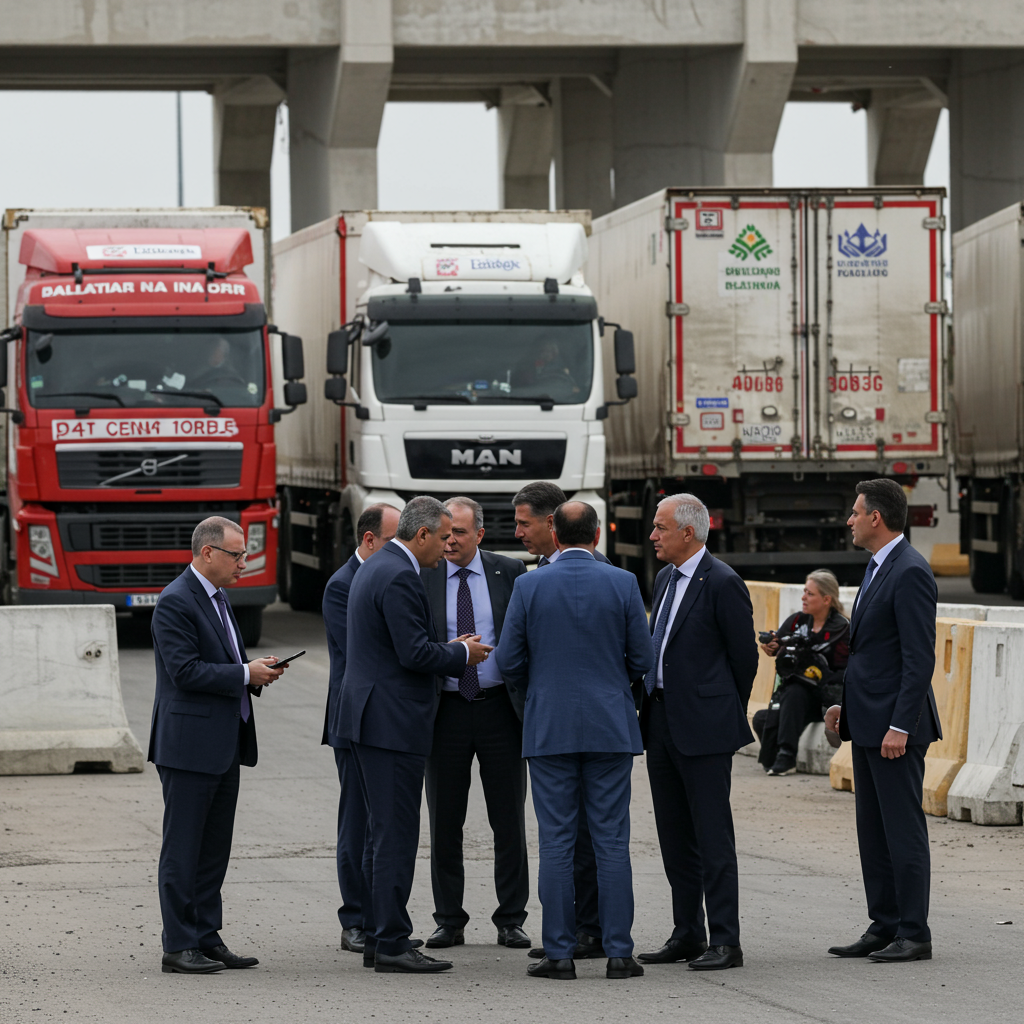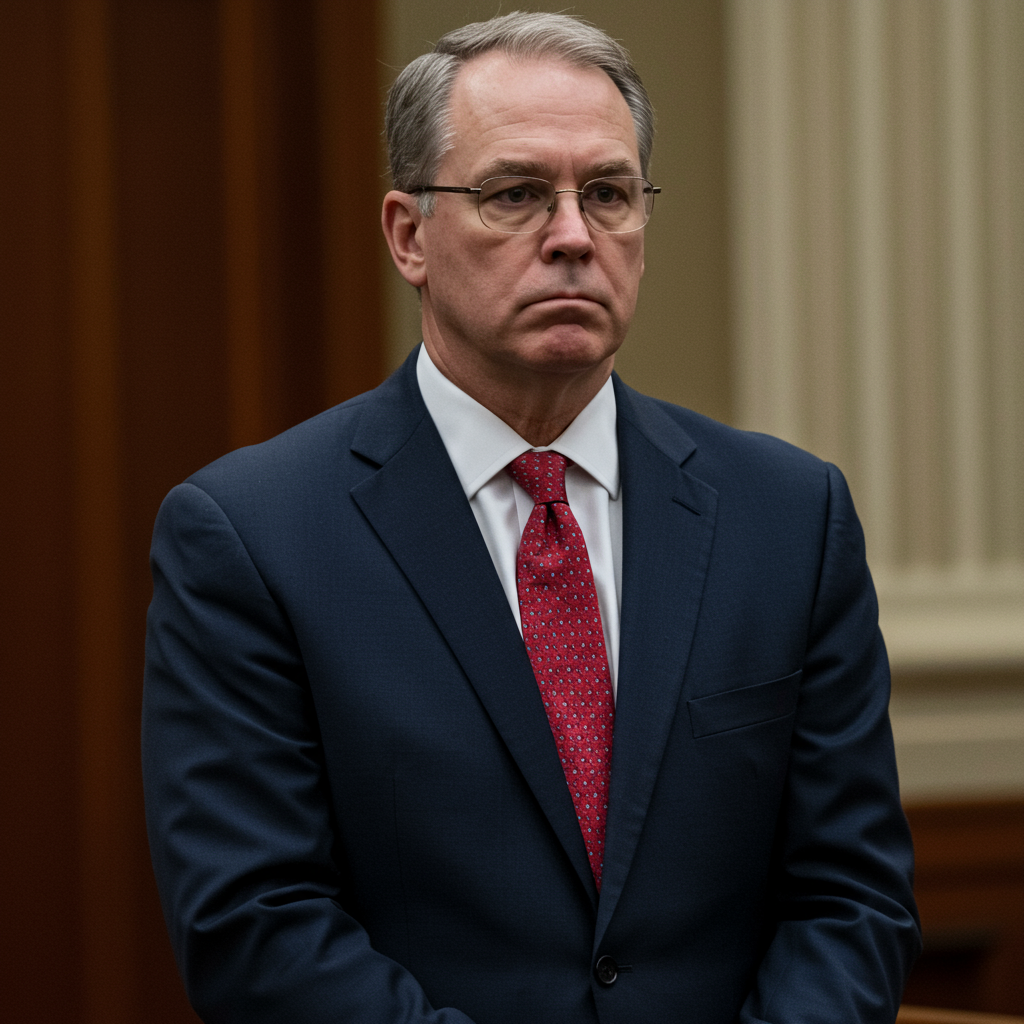A controversial 28-point peace plan, reportedly backed by former U.S. President Donald Trump, is generating significant international debate as it seeks to end the protracted conflict in Ukraine. The proposal, which has been described as heavily favoring Moscow, outlines substantial concessions from Kyiv, including territorial cessions and military limitations, aligning closely with Russia’s longstanding demands. This diplomatic overture comes amidst escalating hostilities and urgent calls for a resolution, yet its alleged terms have sparked strong condemnations from Ukrainian and European officials.
Unpacking the Contentious 28-Point Proposal
The peace framework, reportedly drafted by U.S. and Russian envoys, presents a detailed blueprint for ending the conflict, demanding considerable sacrifices from Ukraine. Key elements of the proposed plan, as reported by Bloomberg, The Kyiv Independent, and Al Jazeera, include:
Territorial Cession: Ukraine would be compelled to recognize Crimea, Luhansk, and Donetsk oblasts as “de facto Russian.” This includes surrendering parts of the eastern Donbas region currently unoccupied by Russian forces. While the plan suggests the U.S. and international community would recognize these territories as Russian, Ukraine itself would not be formally required to do so. In other frontline regions like Kherson and Zaporizhzhia, existing lines of control would largely be frozen. Some reports even hint at a “rental fee” arrangement for Russia’s de facto control over Donbas, though this has been met with skepticism.
Military Limitations: Kyiv would face stringent restrictions on its defense capabilities. The plan reportedly mandates halving Ukraine’s military, forsaking specific weapons systems, and prohibiting foreign troops from serving as ceasefire peacekeepers. Limitations on long-range weapons are also said to be part of the deal.
Alliance Suspension: Ukraine would be required to suspend its pursuit of NATO membership for several years, effectively postponing its long-term security aspirations.
Political Concessions: The proposal allegedly obliges Kyiv to recognize Russian as an official language and lift restrictions on the Russian Orthodox Church, an institution often viewed as closely linked to the Russian state.
In exchange for these far-reaching concessions, Moscow would reportedly commit to refraining from attacking Ukraine or other European countries, a pledge intended to be enshrined in Russian law. However, observers express deep skepticism regarding the reliability of such a commitment, citing Russian President Vladimir Putin’s history of manipulating legal frameworks. U.S. officials have also hinted at unspecified concessions from Russia, though details remain scarce.
The Architects and a Controversial Drafting Process
This ambitious peace initiative was reportedly spearheaded by U.S. Special Envoy Steve Witkoff, who maintained contact with Kirill Dmitriev, the head of Russia’s sovereign wealth fund and a close ally of President Putin. The involvement of Dmitriev underscores significant Russian input into the plan’s formation.
The urgency surrounding these negotiations is attributed, in part, to Ukraine’s worsening energy situation. While Ukrainian President Volodymyr Zelenskyy’s office confirmed receiving a draft, both Kyiv and its European partners were largely excluded from the initial drafting process. This sidelining of key stakeholders has been a major point of contention. The 28-point framework was reportedly delivered by Witkoff to Rustem Umerov, Ukraine’s National Security and Defence Council secretary, during a meeting in Miami, Florida.
Ukrainian Resistance and Zelenskyy’s “Red Lines”
Predictably, the proposed plan has been met with widespread condemnation from Ukrainian officials and lawmakers. They largely view the terms as “unrealistic and dangerous,” amounting to a “non-starter” without substantial modifications. Ukraine’s representative at the UN Security Council, Khrystyna Hayovyshyn, firmly outlined several “red lines”:
No recognition of occupied territory: Ukraine will never recognize any temporarily occupied Ukrainian territory as ‘Russian.’
No limits on self-defense: Ukraine will not accept any limits on its right to self-defense or the size and capabilities of its armed forces.
Sovereignty is non-negotiable: Any infringement on Ukraine’s sovereignty, including its right to choose alliances, is unacceptable.
Hayovyshyn reiterated the fundamental principle of “Nothing about Ukraine without Ukraine and nothing about Europe without Europe,” insisting that the only realistic path to ending the war involves compelling Russia to retreat across economic, political, and military fronts, coupled with strengthened security and sustained financial assistance for Ukraine. Hanna Shelest, director for security programmes at the Ukrainian Prism foreign policy council, went further, characterizing the proposal as a “plan for capitulation, for surrender, for the Russian conditions” rather than a genuine peace plan.
Despite the strong objections to the plan’s specifics, President Zelenskyy has expressed a willingness to engage diplomatically, acknowledging that “only President Trump and the U.S. have sufficient strength for the war to finally end,” and that Ukraine supports “every strong and fair proposal.” However, this open door for dialogue is conditioned on adherence to Ukraine’s core principles.
Global Reactions and Geopolitical Ripple Effects
The peace proposal has sent ripples across the international community, eliciting a range of reactions:
European Unease: Europe has signaled growing discomfort with the plan. EU foreign policy chief Kaja Kallas stressed that any peace attempt must directly involve Ukraine and Europe, noting that Russia has shown no signs of making concessions.
U.S. Official Stances: White House Press Secretary Karoline Leavitt affirmed Trump’s determination to end the war, expressing frustration with both sides. U.S. Permanent Representative to the UN, Michael Waltz, emphasized that diplomacy is the “only path to a durable and just peace,” believing the war cannot end militarily and urging both sides to negotiate a ceasefire.
U.S. Critics: Republican Representative Don Bacon “totally disagreed” with the U.S. negotiating with Russia rather than Ukraine, and the idea of forcing Kyiv to accept the agreement as a “fait accompli.” He drew stark historical parallels to the 1938 Munich Agreement. Former U.S. Ambassador to Russia, Michael McFaul, called it a “really bad deal” for Ukrainian, European, and American interests.
Russian Perspective: Kremlin spokesperson Dmitry Peskov, while denying any formal negotiations, reiterated Moscow’s openness to talks, blaming Kyiv’s “reluctance” for previous pauses in dialogue. Russian envoy Kirill Dmitriev reportedly expressed satisfaction with the draft proposal.
Hungary’s Support: Hungary has emerged as a staunch European ally fully supporting Trump’s peace efforts, with Prime Minister Viktor Orbán echoing sentiments that Ukraine would need a “miracle” to win the war.
- Turkish Mediation: Qatar and Turkey are reportedly involved in mediation efforts, roles they have played in previous Trump-led peace initiatives. Turkish President Recep Tayyip Erdogan met with President Zelenskyy in Ankara, reiterating his call for a return to the “Istanbul process” of negotiations.
- kyivindependent.com
- www.aljazeera.com
- www.newsweek.com
- www.cbc.ca
- www.newsweek.com
Beyond Diplomacy: The Ongoing Conflict
Even as diplomatic maneuvers unfold, military aggression continues unabated. Ukrainian President Zelenskyy reported a devastating Russian strike on Ternopil, killing at least 25 people, including three children, and injuring dozens. Such incidents underscore the grim reality on the ground and the urgent need for a cessation of hostilities.
The International Atomic Energy Agency (IAEA) Director General Rafael Grossi continues to warn that the war remains the greatest threat to global nuclear safety, particularly at the Zaporizhzhia Nuclear Power Plant (ZNPP), where all six reactors are in cold shutdown. The ongoing humanitarian crisis and risk of catastrophic accidents add another layer of urgency and complexity to any peace negotiations. Meanwhile, the U.S. and its allies continue to impose sanctions on Russia, aiming to cripple its economy and pressure Moscow towards the negotiating table.
Analysis: A Path to Peace or Precedent for Capitulation?
This proposed Ukraine peace plan highlights a stark dilemma in international conflict resolution: how to balance the immediate cessation of violence with the principles of territorial integrity and national sovereignty. Forcing a victim of aggression to cede significant territory, reduce its military, and relinquish alliance aspirations raises profound questions about the future of international law and collective security.
The historical comparisons to the 1938 Munich Agreement, where Czechoslovakia was pressured to cede territory to Nazi Germany for the sake of “peace,” resonate deeply with critics. Such precedents suggest that appeasement, particularly without robust, independently verifiable security guarantees, can embolden aggressors rather than deter them. The effectiveness of a “pledge” from Moscow, given its track record, is highly questionable.
Furthermore, sidelining Ukraine and its European partners from the drafting process risks creating an unstable “peace” that lacks legitimacy and true ownership from the affected parties. Any durable resolution must be built on mutual respect and genuinely address the long-term security concerns of all involved, rather than simply satisfying the maximalist demands of the aggressor. The plan, if implemented in its current form, could set a dangerous precedent, signaling to other nations that territorial conquest, if pursued aggressively enough, can ultimately be rewarded through international mediation.
Frequently Asked Questions
What are the core concessions Ukraine would make under this proposed peace plan?
Under the reported 28-point peace plan, Ukraine would be required to make several significant concessions. These include recognizing Crimea, Luhansk, and Donetsk oblasts as “de facto Russian” territories, even surrendering parts of Donbas currently under Ukrainian control. Militarily, Ukraine would need to halve its armed forces, forgo certain weapons systems, and prohibit foreign troops from acting as peacekeepers. Politically, the plan stipulates suspending Ukraine’s pursuit of NATO membership for several years, recognizing Russian as an official language, and lifting restrictions on the Russian Orthodox Church within Ukraine.
Who are the primary architects and key figures behind this U.S.-led peace proposal?
The proposed peace plan is reportedly backed by former U.S. President Donald Trump. Its primary architect is identified as U.S. Special Envoy Steve Witkoff, who has engaged with Kirill Dmitriev, a close ally of Russian President Vladimir Putin and head of Russia’s sovereign wealth fund, in its drafting. The framework was reportedly delivered to Rustem Umerov, Ukraine’s National Security and Defence Council secretary, during a meeting in Miami, Florida. While these figures are central, Ukrainian and European partners were largely excluded from the initial drafting process.
Why is this specific peace proposal facing such strong condemnation from Ukrainian and European officials?
The peace proposal is facing strong condemnation because its terms are widely perceived as heavily skewed in Russia’s favor, demanding substantial concessions from Ukraine without equivalent demands on the aggressor. Ukrainian officials describe it as “unrealistic and dangerous,” crossing “red lines” such as recognizing occupied territory as Russian, limiting Ukraine’s right to self-defense, or infringing on its sovereignty and choice of alliances. European officials express unease over being excluded from the drafting process and insist that any peace attempt must involve Ukraine and Europe directly, noting Russia’s unwillingness to make concessions. Critics argue the plan resembles “capitulation” and risks rewarding aggression.
Conclusion
The emergence of Trump’s proposed Ukraine peace plan underscores the immense pressure to end a devastating conflict, yet it has ignited a fierce debate over the principles of justice, sovereignty, and international law. While the desire for peace is universal, the terms outlined in this proposal present a profound challenge to Ukraine’s national integrity and security, as well as to the broader international order. As diplomatic efforts continue, the path to a truly durable and equitable peace remains fraught with deep divisions, requiring careful consideration of its long-term implications for Ukraine, Europe, and global stability.




